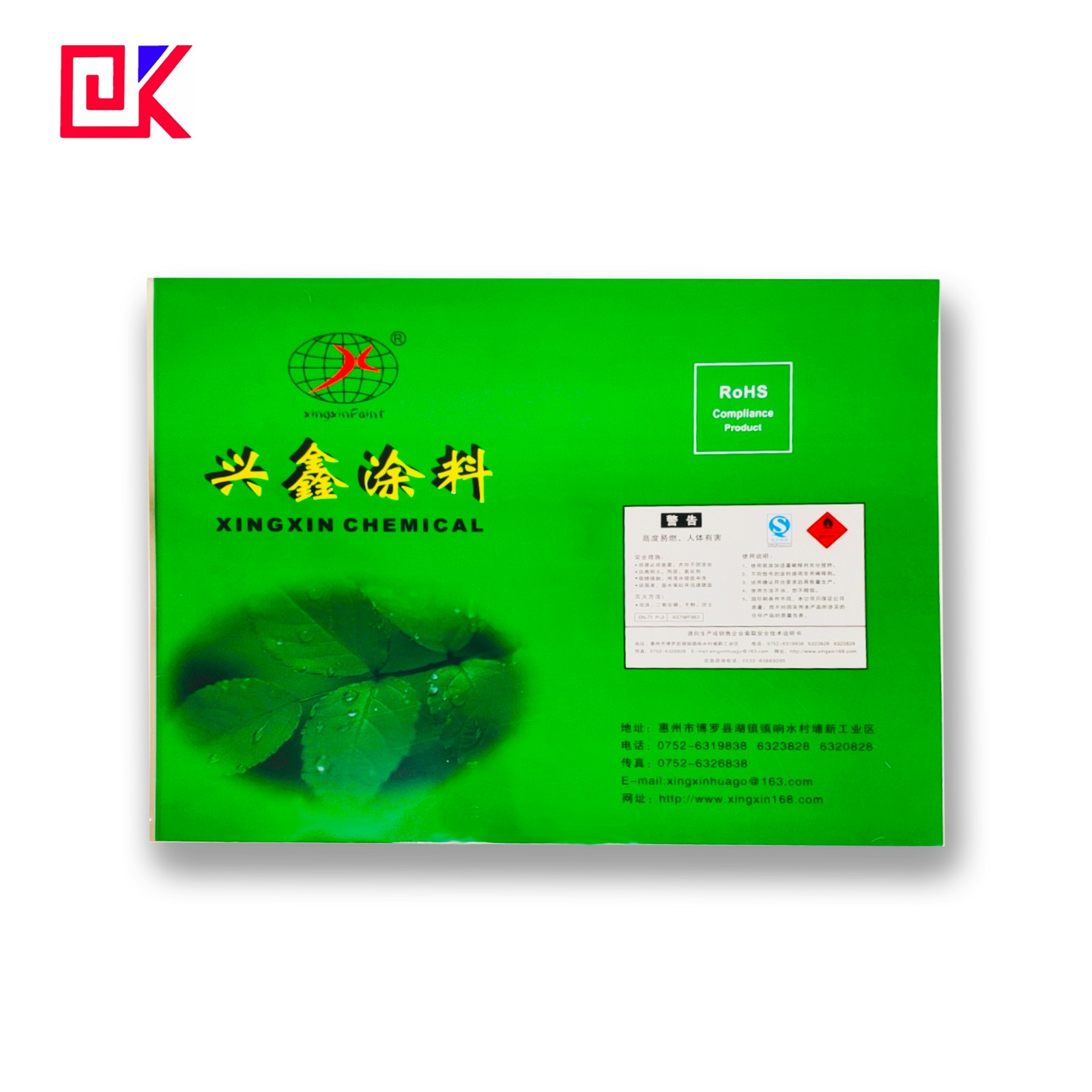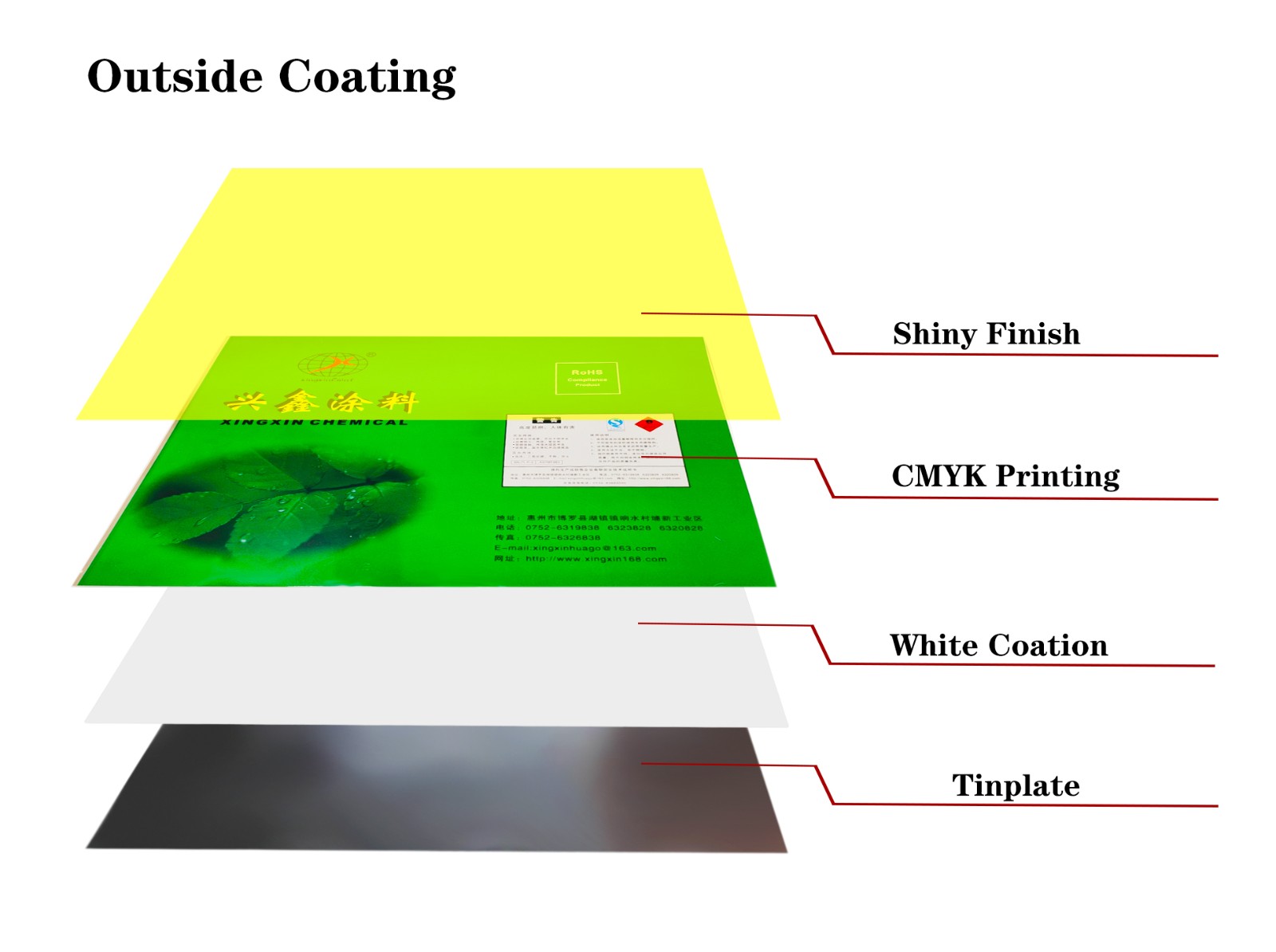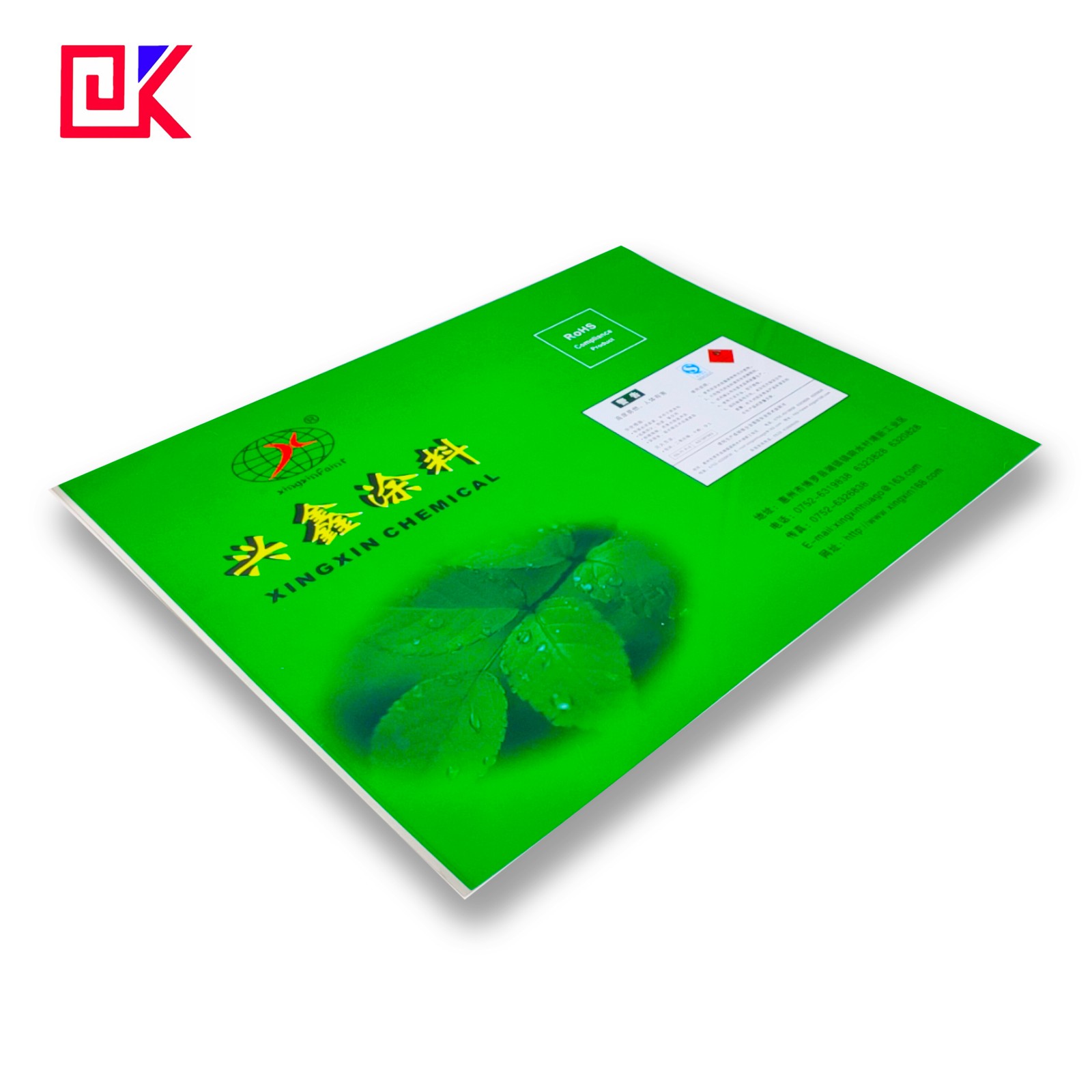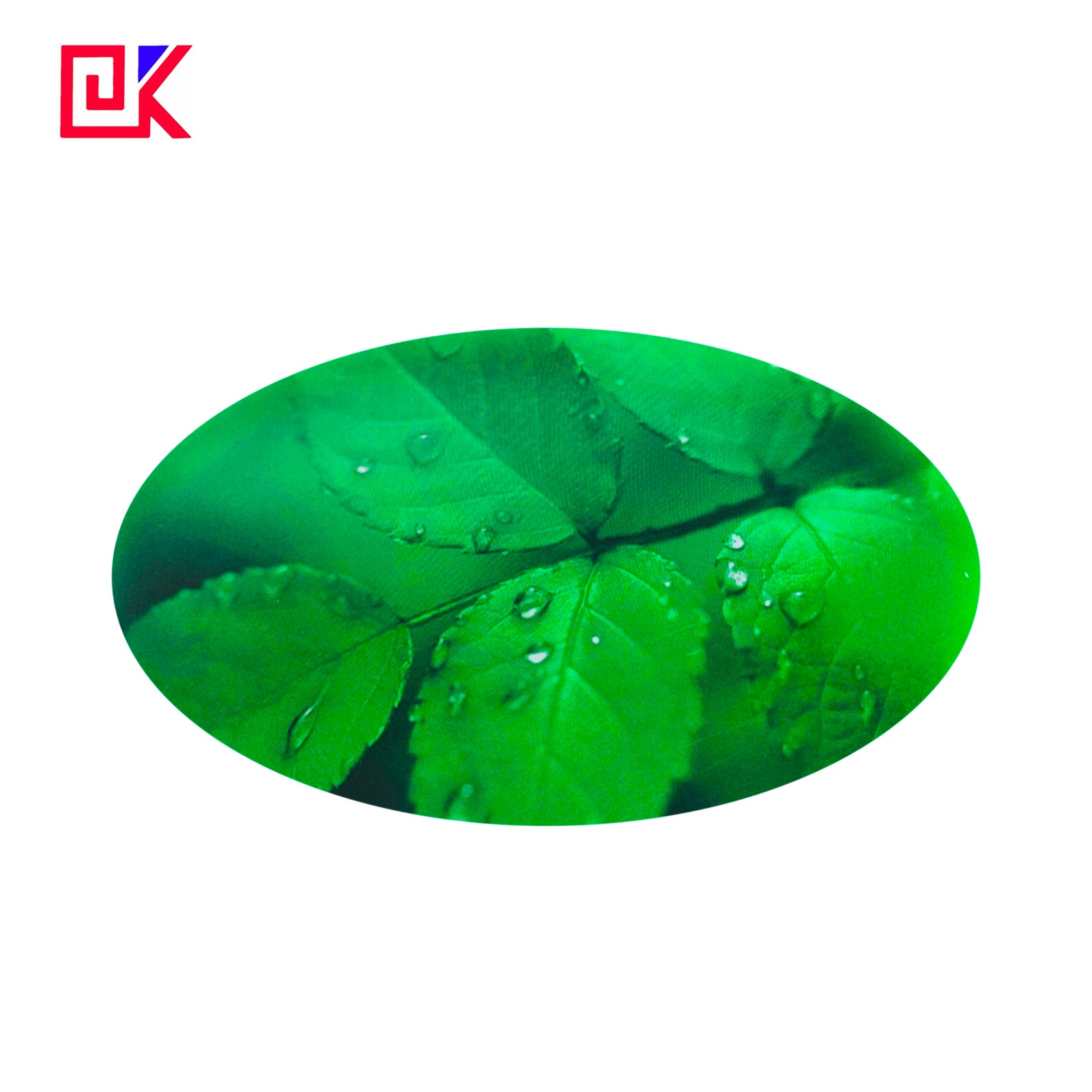Specification of Lithographic Printed Metal Sheet For Paint Can:
Product name | Lithographic Printed Metal Sheet For Paint Can |
Material | Tinplate sheet,tinplate coil |
Steel type | MR SPCC |
Tin coating | 2.8g/㎡ |
Temper Grade | T1~DR10 |
Annealing | CA(Continuous annealing),BA |
Thickness | 0.20~0.38mm |
Normal width | 508~960mm |
Normal length | 712~1145mm |
Internal coating | ICI Gold lacquer |
Outside printing | White coation+CMYK Printing+Green+Shiny Finish |
tinplate coil printing for | paint can, chemical can, food can,beverange can, bottle closures and beer caps |
tinplate coil printing MOQ | 2 tons per size |
Printing capacity | 4000 tons per Month |
Lithographic Printed Metal Sheet more information:

Printed Tinplate

Outside Coating
All of our products support customization, if you need please feel free to contact us.
Application of tinplate coil printing:
Tinplate printing products with its innovative binding design and special exquisite printing effect, mainly used for packaging products such as oil cans, aerosol cans, beverage cans, food cans,paint cans, miscellaneous cans, batteries, toys, pots, film boxes, custom printed metal tins, lithographic printing and so on。
Quality Control:
Raw Material Inspection → Drawing and Samples` → Inspection →Correction of Machine and Equipment → Trial production → Finished Production Testing →The Third inspect department
Introduction of tinplate coil printing:
tinplate coil printing is to print patterns on tinplate coil (tin-plated coil). It mainly uses the physical properties of water and ink to repel, and uses printing pressure to transfer the printing text to tinplate through a blanket, which belongs to the principle of lithographic offset printing. This process has special requirements for inks.
Characteristics of tinplate coil printing.

The process of printing tinplate is as follows:
Plain tinplate-coatings-plate making-printing tinplate-Shroud on the printed tinplate-Drying process for printed tinplate-Inspection of finished printed tinplate
1. Plain Tinplate
The thickness of printed tinplate is usually between 0.15 and 0.45 mm. With the increasing demand for metal containers, the variety of tinplate is also increasing. The main types are CC steel, large-size rough-faced iron, low tin content or chrome plating. Rolled steel sheet and secondary cold-rolled steel sheet with a thickness of 0.15 to 0.18 mm. The production of these types of tinplate not only reduces the cost of manufacturers and users, but also meets the electricity demand. Welding cans, bonding cans, DRD cans, DI cans and other cans, crown caps, unscrewing caps, etc., are used in the industries of oleochemicals, daily chemicals, canned foods, beverage cans, stationery and cosmetics, etc. Metal container packaging, provides good packaging materials,
2. coatings
Paint before printing. Under normal circumstances, the tinplate front and back sides need to be printed on the main surface and the inner surface to ensure that the printed iron products have good requirements for canning, canning, and appearance decoration. Of course, the thickness of the coating film is usually only A few microns thick, it is difficult to completely cover the tinplate surface. Therefore, in order to prevent the corrosion phenomenon at the defects of the organic coating film, tinplate is required to have corrosion resistance, the oxide film on the surface thereof provides coating film compactness, and the surface oil layer protects the coating film leveling property. Coatings are classified as oily, phenolic, epoxy, polyester, ethylene, acrylic, amino, etc. by resin, and are divided into inner coating, outer coating, color coating, overcoat coating, special coating, etc. according to use. Iron printing ink is different from limb printing ink, it must have heat resistance, processability, dryness, high temperature sterilization resistance and transparency.
The coating is determined by the product. A transparent golden yellow paint is required for rust prevention and aesthetics. At the same time, when selecting the inner coating, the hygienic requirements of the contents must be considered. The inner coating must have corrosion resistance, good adhesion, flexibility, non-toxic and tasteless, and meet food hygiene and safety requirements. In addition, it should also meet the processability of canning, such as the heat of high-frequency resistance welding, local high-temperature heating of internal paint and high-pressure cooking after canning without discoloration or loss of light.
3. plate making
Although the process of making iron plates is similar to that of offset printing, they have different requirements in terms of process. As the iron plates serve the outer packaging of metal containers or products, it is important to understand the basic characteristics of metal packaging containers when making plates, such as Motor oil iron cans need to consider the requirements of empty resistance welding when making plates. There is a certain space between the patterns, so that the product can be easily cut, high-frequency welded seams, and cans, such as battery shells, after printing. To arrange as many as possible within the specified tinplate size range, the forks should be easy to cut and punch the battery case. In addition, for candy boxes, it is necessary to know the blanking knife edge size of the lid, and leave a certain amount of material accordingly, otherwise it will cause trouble to the punching of the lid. Under normal circumstances, according to the customer to provide the film and pattern, proofing before the official printing. Proofing is a method of simulating production. The selection of tinplate specifications, coatings, and inks must be determined at the time of proofing. After the customer confirms the sample, it can be used as the template for the official iron printing.
4. Printing tinplate
After the tinplate is coated on the inner surface and the outer surface, it can be printed on the machine. The tinplate printing machine is divided into three types: monochrome machine, double-color machine and multi-color machine. two-color iron printers from Japan's Fuji Company. The domestic machines are mainly the single-color iron printers from Shanghai Goss Printing Equipment Co., Ltd. The structural principle of a tinplate printing machine is similar to that of an offset printing machine. The printing plate is mostly ps version. Before printing, make sure that the ps version is well familiar with product requirements. In the printing color, water-ink balance adjustment, printing pressure adjustment, and overprinting accurate adjustment are required. Since the tinplate surface is different from paper and does not have the pores of the paper, the pores cannot be arranged. When considering the color sequence, we cannot arrange too much area wet pressure wet multi colors Overprinting can only be performed on 50% or less of the dots. When arranging the color sequence, it is generally necessary to comprehensively consider the main color of the layout, the accuracy of overprinting and the pros and cons of the operation, and analyze it according to the characteristics of the product itself and the performance of the machine.

5. Shroud on the printed tinplate
after finishing the varnishing, a layer of bright oil should be covered on the printed tinplate surface to increase the gloss of the surface of the printed product. At the same time, the hardness of the product surface can be improved, so that the printing ink layer has a certain flexibility and Corrosion resistance. The varnish for tinplate should have the following properties:
(1) Good color retention. The diluent in the varnish cannot make the ink bleed and fade;
(2) It has sufficient hardness and firmness to be able to withstand the deformation process of the subsequent process;
(3) It is compatible with white paint or primer, and does not corrode. White paint or primer. Commonly used printing iron cover varnishes are mainly polyester, modified epoxy ester, acrylic resin. According to different product characteristics, in addition to varnishes, there are matte oils, wrinkle varnishes, and pearl infusion styles. Different products with unique taste and artwork.
6. Drying process for printed tinplate
Coatings and inks need to be dried in a tunnel oven. The drying conditions of printing inks are usually between 130 ℃ and 160 ℃, the drying time is controlled at about 10 minutes. The drying oven is between 170 ℃ and 210 ℃, with the length of 30 meters. It is composed of three stages, namely the heating zone ,constant temperature zone and the cooling zone. Heating up is the first stage after the tinplate enters the oven. The main function is to raise the tinplate from room temperature to the set temperature. The main function of the constant temperature zone is to maintain the temperature reaching in the heating zone. The function of the cooling zone is to fully cool the dried tinplate prints. Once the cooling is not enough, the paint films are easily scratched when the tinplates are stacked. The stacking forks are prone to sticking. Baking time and machine speed. Relevantly, if the speed is too fast, the entire drying time will be shortened, and the paint and ink baking will not be sufficient during the peak temperature time, which will cause the ink and paint to become soft due to the imperviousness of the paint film. Eventually the food or beverage will taste bad after coming into contact with it. If the machine speed is too slow. It will cause over-baking. In this case, many coatings become brittle and are prone to paint peeling or popping when processed. At the same time, excessive baking will cause discoloration of the coating ink. The measure to avoid poor baking is to regularly check the curve in the oven temperature controller to ensure the temperature peak time at standard time.
7. Inspection of finished printed tinplate
The inspection of finished printed tinplate products is divided into two types: conventional physical and chemical inspection and special requirements inspection.